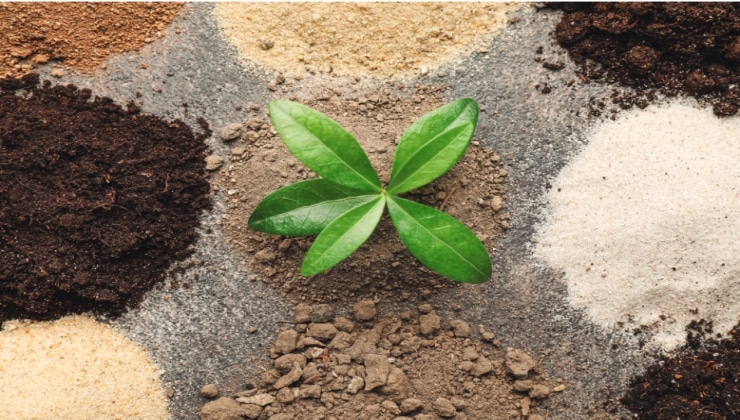How Soil, Mulch, and Fertilizers Shape Your Landscape

Contrary to initial belief, a beautiful landscape does more than just make your yard look pretty—it also brings many practical benefits. Aside from enhancing your property’s livability and comfort, a well-designed landscape also boosts its future resell value.
For instance, landscaping is what lets you relax in the shade of a big tree on a hot day or allows your house to stay cooler because of the trees around it. Oh, and did we mention its impact on local biodiversity, too? An effective landscape can also serve as a little neighborhood for birds and butterflies, making your yard a lively, natural place.
But to achieve these benefits, there are three simple yet vital materials you would need. In this guide, we will discuss the game-changing impacts of soil, mulch, and fertilizer in pulling off your ideal landscape.
Soil quality is the foundation of your plants’ health
Imagine landscaping as a recipe with different ingredients: bits of rocks, some sand, some clay, and some organic stuff like leaves. This is what soil is made up of. It has everything a plant needs to grow and thrive, making it one of the most basic yet game-changing components in shaping your landscape.
There are different types of soil, just like there are different cake recipes. Some are great for plants, while others might need a little help. Good soil gives plants the right nutrients and water they need to stay healthy. On the contrary, poor soil quality inhibits plant growth and health.
In short, soil quality determines your plant’s health. So, if you want healthy and thriving plants, investing in high-quality soil is crucial. Fortunately, quality landscaping supplies, such as soils, are now widely available and readily accessible through home deliveries.
But how does one determine if their soil works? This is where soil testing comes in. It helps figure out what your soil needs—like if it needs more food for plants or maybe a bit more water.
Protect your landscape with mulch
Mulch is like a cozy blanket for your garden. It keeps the soil healthy by shielding it from the sun, holding onto moisture, and stopping pesky weeds from popping up. Think of it as nature’s helper, keeping things comfy for your plants.

Much like soil, mulch also comes in different variations. You can choose from wood chips, straws, or even rocks. Each kind has its perks; like some keep the soil cool, some add nutrients, and others just look nice.
Wood chips
They help retain moisture, keep weeds away, and gradually add nutrients to the soil as they break down.
Straw mulch
This acts like a cozy blanket and keeps the soil cool, preventing it from drying out too quickly. It’s also great for vegetable gardens as it decomposes relatively quickly, adding organic matter to the soil.
Rocks or pebbles
These do not break down like other mulches, so they’re fantastic for areas that need extra stability. They’re excellent for preventing erosion and retaining moisture in hot climates.
Shredded leaves or grass clippings
They break down quickly, adding nutrients back into the soil as they decompose.
Ultimately, the best mulch for your garden depends on what your plants need and the look you prefer. Experimenting with different types can help you find the perfect fit for your green space.
Nourish your landscape with fertilizers
Just like people need vitamins, plants need things like nitrogen, phosphorus, and potassium to thrive and stay healthy. Fertilizers give them that extra boost.
Fertilizers has different variations, like powders, pellets, or liquids. Some are quick-release and work fast, while others release nutrients slowly over time. There are specific fertilizers for different types of plants, like ones for flowers, veggies, or trees. Each type gives plants what they need to grow their best.
Using fertilizers is like giving plants a balanced meal at the right time. And by “balanced,” that means avoid overfeeding them or give them unnecessary or inappropriate nutrients.
Following the instructions on the fertilizer package helps you know how much to use and when to use it—usually in the growing season when plants need that extra nourishment. Timing is key to keeping your garden well-fed and thriving!
Before you begin landscaping
Remember, every garden is unique, just like every gardener! Embrace the opportunity to nurture and care for your green space—whether it’s a small balcony garden or a sprawling backyard oasis.
Feel free to play around with different types of soil, mulch, and fertilizers to see what works best for your plants. By applying these simple tips about soil health, mulching, and fertilizing, you’re setting the stage for a thriving garden.
With a little bit of care and attention, you’ll create your ideal landscape—one that brings joy, beauty, and a touch of nature’s magic into your life every day.






